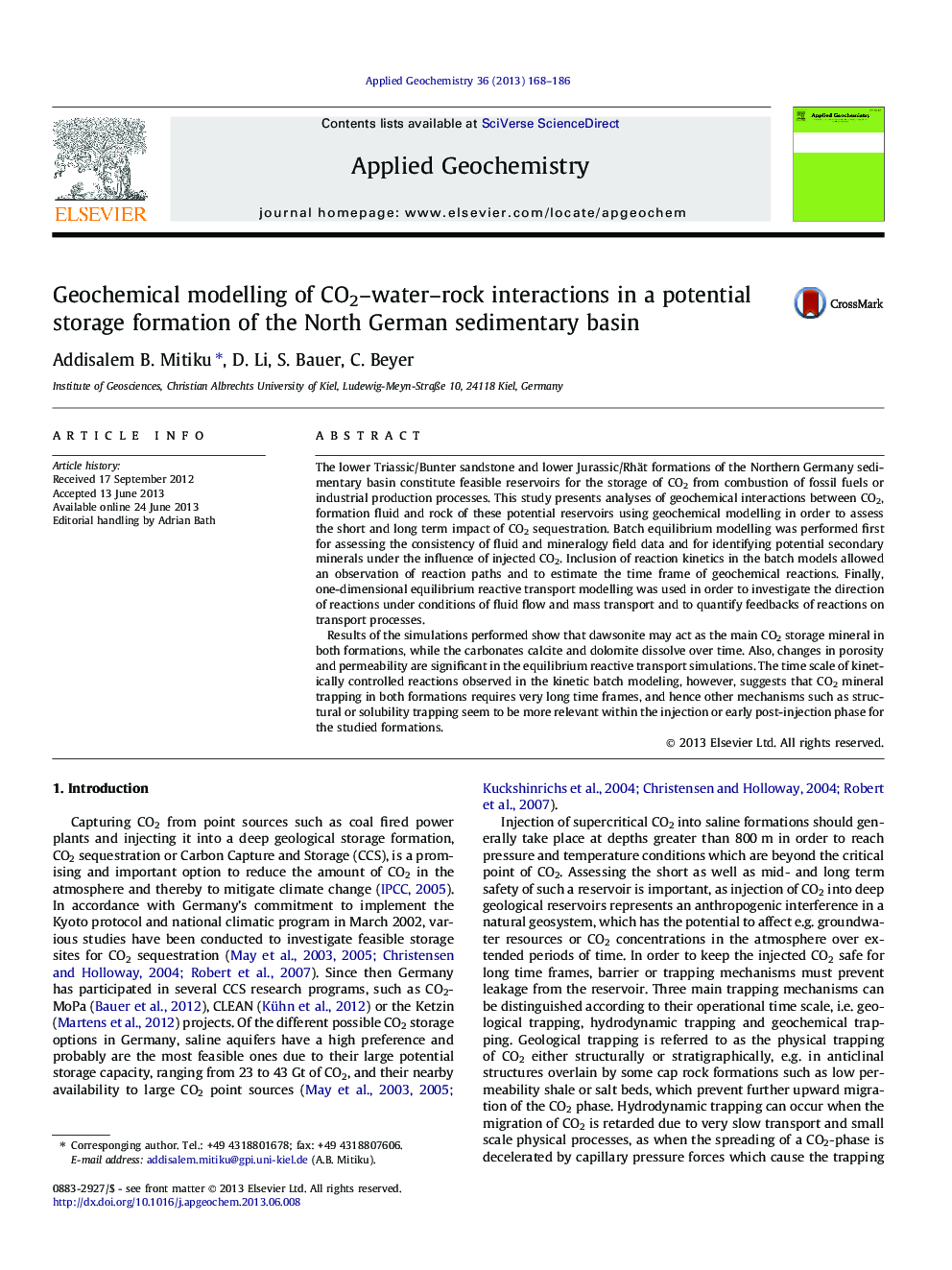| Article ID | Journal | Published Year | Pages | File Type |
|---|---|---|---|---|
| 4435994 | Applied Geochemistry | 2013 | 19 Pages |
•Geochemical respond of North Germany reservoirs to CO2 sequestration is studied.•Both equilibrium and kinetic reactions modelling were conducted.•The short and long term impacts of CO2 sequestration are assessed.
The lower Triassic/Bunter sandstone and lower Jurassic/Rhät formations of the Northern Germany sedimentary basin constitute feasible reservoirs for the storage of CO2 from combustion of fossil fuels or industrial production processes. This study presents analyses of geochemical interactions between CO2, formation fluid and rock of these potential reservoirs using geochemical modelling in order to assess the short and long term impact of CO2 sequestration. Batch equilibrium modelling was performed first for assessing the consistency of fluid and mineralogy field data and for identifying potential secondary minerals under the influence of injected CO2. Inclusion of reaction kinetics in the batch models allowed an observation of reaction paths and to estimate the time frame of geochemical reactions. Finally, one-dimensional equilibrium reactive transport modelling was used in order to investigate the direction of reactions under conditions of fluid flow and mass transport and to quantify feedbacks of reactions on transport processes.Results of the simulations performed show that dawsonite may act as the main CO2 storage mineral in both formations, while the carbonates calcite and dolomite dissolve over time. Also, changes in porosity and permeability are significant in the equilibrium reactive transport simulations. The time scale of kinetically controlled reactions observed in the kinetic batch modeling, however, suggests that CO2 mineral trapping in both formations requires very long time frames, and hence other mechanisms such as structural or solubility trapping seem to be more relevant within the injection or early post-injection phase for the studied formations.
